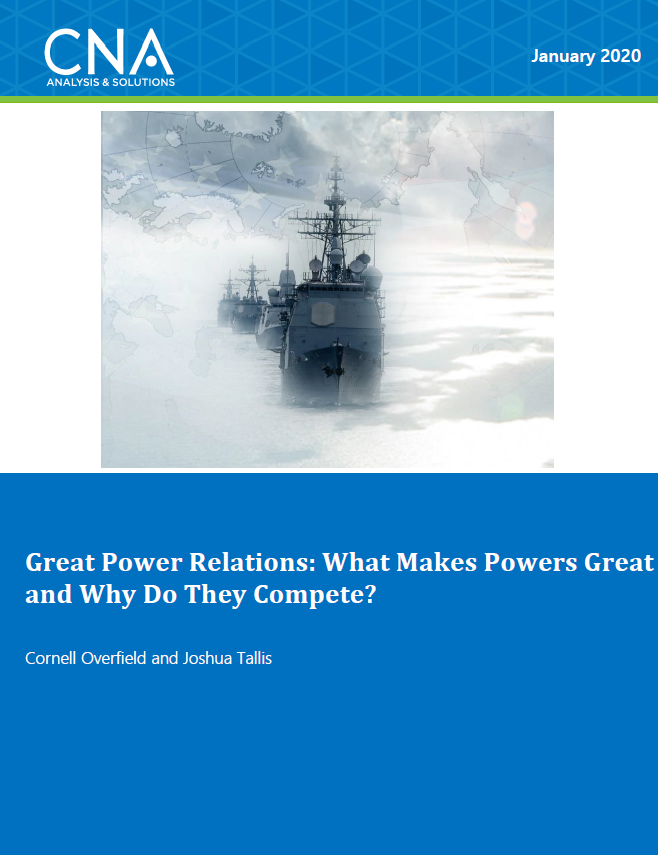Great Power Relations
This paper explains the “what” and the “why” of great power competition (GPC) and some of the complex questions inherent in strategies based on the GPC construct. What makes powers great? What would drive those powers to compete? Are there other ways to describe how great powers interact, other than through competition? To answer these questions, this paper explores GPC through the lens of the international relations (IR) frameworks that underpin our understanding of national security. Our objective is to provide policymakers with a richer strategic context surrounding GPC and offer more tools to shape US strategy.
The questions raised by an exploration of GPC, and their relationship to the ways that policymakers interpret global events, are important to consider for several reasons. In the absence of stable definitions for what constitutes a great power, it is difficult to make judgements about the status of the evolving international system. Without a clear outline of that structure, it is difficult to identify the relevant analytic frameworks and historical analogues that can help us better explain events and forecast future challenges. In short, explicitly connecting the topic of great power competition to longstanding IR analytic tools can help us better understand the era we are entering and its implications for strategy.
What does GPC mean and why does it occur?
Great power competition is one component of the broader dynamic of great power relations, the ways in which economically and militarily significant countries interact. These interactions, which include both competition and cooperation, manifest differently according to the structure of the international system (i.e., the number of great powers) as well as how analysts understand the fundamental principles of global politics. Thus, understanding who the great powers are and why they interact as they do is a central strategic challenge. Our analysis informs several related findings based on this study:
- Descriptions of GPC in policy documents like the National Security Strategy, unclassified National Defense Strategy, and other Joint and service strategies, often pull from different understandings of global dynamics (i.e., from multiple IR schools of thought)—from an emphasis on the importance of democracies and institutions, to myriad strains of analysis predicated on forms of power politics. Even within the context of power politics, various traditions play out across US strategies, including related but intellectually distinct discussions of power transitions (the rise and fall of hegemons) and the challenges of a multipolar world.
- Our analysis finds that US strategies are variable with respect to a consistent internal narrative. This complicates the ability for policymakers and policy documents to remain internally coherent with respect to perspective, and transparent about the worldviews on which they are operating. We also identified areas of vulnerability where GPC as an organizing principle may narrow policymakers’ assessment of global events. These vulnerabilities center on the role of cooperation in great power dynamics. Most IR frameworks encourage, in at least some contexts, the value of idenifying points of cooperation with other great powers. US strategies often frame great power adversaries exclusively in terms of competition, which may obfuscate opportunities for cooperation that are in the US interest.
- Relatedly, GPC’s focus on China and Russia does not address the potential for other states to be, or to become, great powers, which may emerge—or be cultivated through US policy to serve—as potential sources of cooperation or balancing. Finally, by associating “competition” with great power adversaries and “cooperation” with allies and partners, strategies risk obscuring the reality that allies can and do compete with one another, just as adversaries can cooperate.
DISTRIBUTION STATEMENT A. Approved for public release: distribution unlimited.
Cleared for Public Release.
Details
- Pages: 40
- Document Number: DIM-2019-U-021755-1Rev
- Publication Date: 1/30/2020
